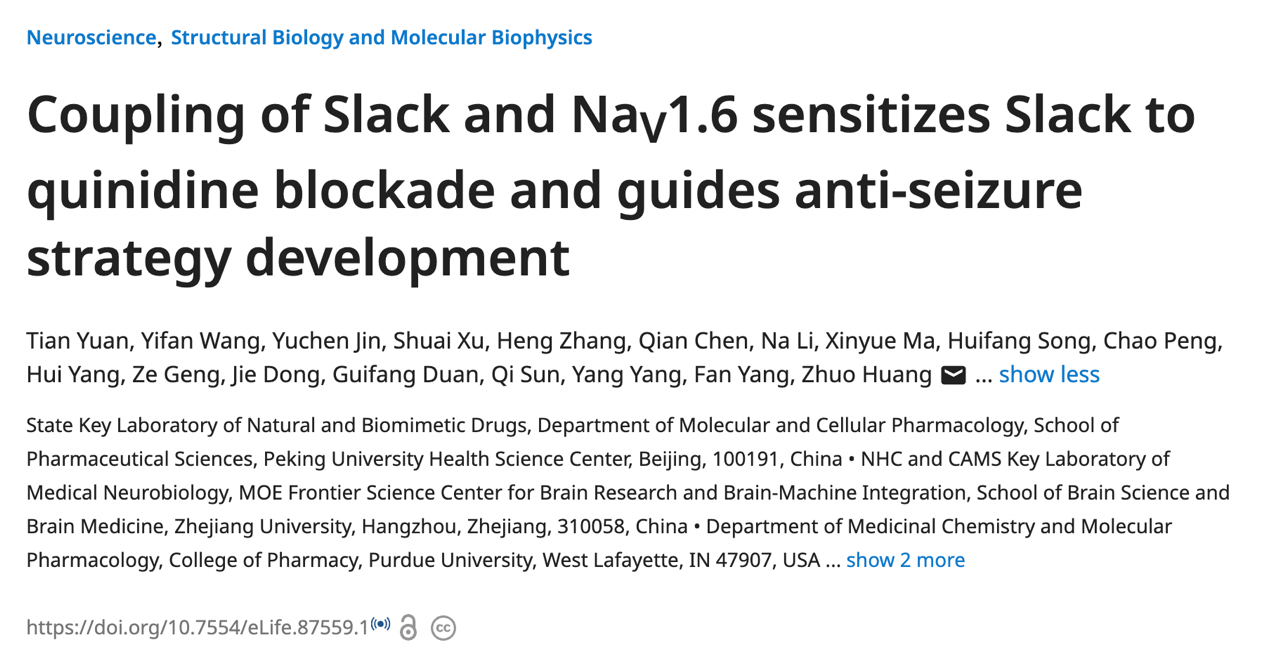Dr. Zhuo Huang: Coupling of Slack and NaV1.6 sensitizes Slack to quinidine blockade and guides anti-seizure strategy development

Abstract
Quinidine has been used as an anticonvulsant to treat patients with KCNT1-related epilepsy by targeting gain-of-function KCNT1 pathogenic mutant variants. However, the detailed mechanism underlying quinidine’s blockade against KCNT1 (Slack) remains elusive. Here, we report a functional and physical coupling of the voltage-gated sodium channel Nav1.6 and Slack. NaV1.6 binds to and highly sensitizes Slack to quinidine blockade. Homozygous knockout of Nav1.6 reduces the sensitivity of native sodium-activated potassium currents to quinidine blockade. Nav1.6-mediated sensitization requires the involvement of Nav1.6’s N- and C-termini binding to Slack’s C-terminus, and is enhanced by transient sodium influx through Nav1.6. Moreover, disrupting the Slack-Nav1.6 interaction by viral expression of Slack’s C-terminus can protect against SlackG269S-induced seizures in mice. These insights about a Slack-Nav1.6 complex challenge the traditional view of “Slack as an isolated target” for anti-epileptic drug discovery efforts, and can guide the development of innovative therapeutic strategies for KCNT1-related epilepsy.
Original Link: https://elifesciences.org/reviewed-preprints/87559